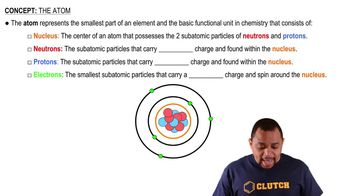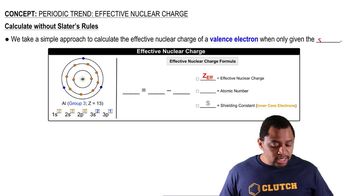Here are the essential concepts you must grasp in order to answer the question correctly.
Atomic Structure
Atoms consist of protons, neutrons, and electrons. Protons are positively charged particles found in the nucleus, while electrons are negatively charged and orbit the nucleus. The number of protons defines the element, and in a neutral atom, the number of electrons equals the number of protons.
Recommended video:
Ions
Ions are atoms or molecules that have gained or lost one or more electrons, resulting in a net charge. Cations are positively charged ions formed by losing electrons, while anions are negatively charged ions formed by gaining electrons. The charge of the ion indicates the difference between the number of protons and electrons.
Recommended video:
Charge Calculation
To determine the number of protons and electrons in an ion, one must consider its charge. For example, in the case of Se2-, the '2-' indicates that the ion has gained two extra electrons compared to its neutral state. Therefore, the number of electrons is the atomic number of selenium plus two, while the number of protons remains equal to the atomic number.
Recommended video:
Effective Nuclear Charge Calculation
 Verified step by step guidance
Verified step by step guidance


